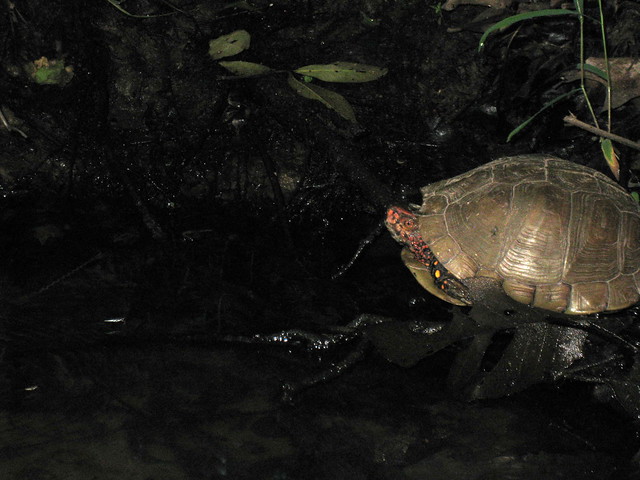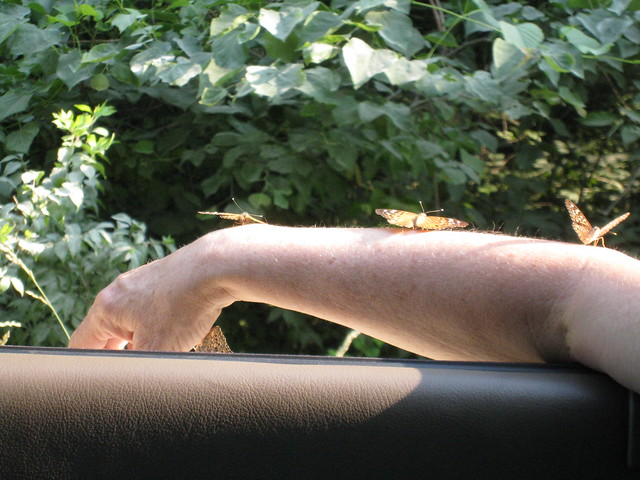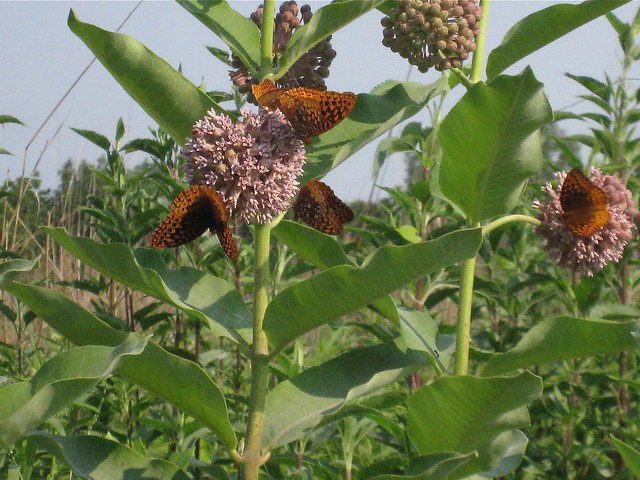 |
| Wild Rose |
cardinal
starling
English sparrow
robin
blue jay
Our list was a bit longer this year, but it was hazy, hot, and humid even at 6:30 AM. The heat kept many of the birds from singing, and if you're going to bird when the leaves are full-sized, you need those birds to sing. We started at Lake 22. This small lake has been part of my territory for 8 years. Some dead trees stood in the lake and Tree Swallows nested there. Each year the snags decayed, and this year, none were left. Not a swallow was seen. A deeply eroded road leads down to a beautiful creek where I've recorded Kentucky Warbler and Black-and-White Warblers, but the area was fenced off, presumably because of an erosion control project. A half-dead elm near the parking area hosted an Orchard Oriole nest, but the tree had been removed and the orioles were missing. We did find this Three-Toed Box Turtle in a wet area on the far side of the lake. His red eye and face markings show that he's a male.
The bird of the day was the Acadian Flycatcher. It's a common bird in the woodlands in our area, one of a complex of similar-looking small flycatchers in the genus Empidonax. You hear 10 for every one you see. Near Lake 23, one perched on a thin branch over the road, allowing us a good long look as he surveyed his domain. Another surprise was a female Wood Duck. Not an uncommon bird, but it can be difficult to find. I don't think I've ever recorded one on the summer bird survey before.
If the birds were a bit shy, the butterflies were not. Thousands upon thousands of fresh-looking Hackberry Emperor butterflies (Asterocampa celtis) dotted the gravel roads for several miles. Hackberries are known for the fondness for landing on humans, lapping up the salt in sweat. They seemed to enjoy Ginny's arm:
Great Spangled Fritallaries (Speyeria cybele) were out in numbers too. We saw them everywhere we found Common Milkweed (Asclepias syriaca) or Purple Milkweed (A. purpurascens).



The fritallaries are spectacular! Thanks for the photos.
ReplyDeleteThanks Patricia! Seeing so many at once was really a treat!
ReplyDeleteHopefully the orioles found another mature tree in which to build their nest. I imagine that they did, though it might not be as visible to birders as the old one. That turtle is a dashing fellow, isn't he?
ReplyDeletetotally awesome photos
ReplyDeleteThanks Sandra! I don't really know what I'm doing with a camera. I just take lots of photos and a few look pretty good! I'm learning some things from your blog, MadSnapper!
ReplyDelete